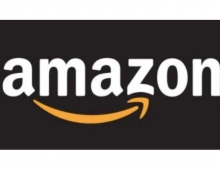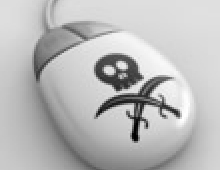
A Fifth of PC Software in United States is Pirated
Software piracy grew last year, accounting for 41 percent of all PC software installed, with losses to companies estimated at $53 billion, the Business Software Alliance said on Tuesday.
Governments and software companies are making progress in slowing the illegal use of personal computer (PC) software products, but progress has stalled in the United States, posing serious challenges to the high tech sector and cyber security, according to the study.
These are among the findings of the Sixth Annual BSA-IDC Global Software Piracy Study released today by the Business Software Alliance (BSA).
In 2008, the rate of PC software piracy dropped in about half (57) of the 110 countries studied, remained the same in about a third (36), and rose in just 161. The worldwide PC software piracy rate rose for the second year in a row, from 38 percent to 41 percent, because PC shipments grew fastest in high-piracy countries such as China and India, overwhelming progress elsewhere.
In another sign of the scale of the problem, the monetary value of unlicensed software ? "losses" to software companies ? broke the $50 billion level for the first time. Worldwide losses grew by 11 percent to $53.0 billion in non-adjusted dollars, although half of that growth was the result of the falling US dollar. Excluding the effect of exchange rates, losses grew by 5 percent to $50.2 billion. This compares to a legitimate PC software market of $88 billion in 2008, and a personal computer market of $244 billion.
The United States has the lowest PC software piracy rate in the world, 20 percent. However, it has the largest dollar losses from piracy, $9.1 billion, because it is by far the world?s largest software market. Losses have risen steadily in recent years while the piracy rate has hovered around 20-21 percent.
"We are continuing to make progress against PC software piracy in many countries, which helps people working in the US-led global software industry. That?s the good news," said BSA President and CEO Robert Holleyman.
The bad news is that PC software piracy remains so prevalent in the United States and all over the world," Holleyman added. "It undermines local IT service firms, gives illegal software users an unfair advantage in business, and spreads security risks. We should not and cannot tolerate a $9 billion hit on the software industry at a time of economic stress."
The study also found seven countries with piracy rates of 90 percent or higher: Georgia, Bangladesh, Armenia, Zimbabwe, Sri Landa, Azerbaijan and Moldova.
Impact of Global Recession Is Mixed
The global economic recession is having a mixed impact on software piracy, the study says. John Gantz, chief research officer at IDC, notes that consumers with reduced spending power may hold on to computers longer, which would tend to increase piracy because consumers are more likely than other types of PC users to load unlicensed software on older computers. However, pocketbook pressures are also spurring sales of inexpensive "netbooks" and laptops, which tend to come with legitimate pre-loaded software; and spurring businesses to implement software asset management (SAM) programs to increase efficiencies and lower IT costs.
"Reduced buying power is only one of many factors affecting software piracy," Gantz says. "The economic crisis will have an impact ? part of it negative, part of it positive ? but it may not become fully apparent until the 2009 figures come in."
Among other factors affecting PC software piracy, the global spread of Internet access is driving up piracy, with IDC projecting 460 million new Internet users coming online in emerging markets in the next five years. Growth in the number of consumers and small businesses will also bring more high-piracy users into the fold.
On the positive side, factors contributing to falling piracy rates include legalization programs offered by software vendors and governments; public-private partnerships in education and enforcement, including BSA?s anti-piracy initiatives; new software distribution models such as "cloud computing"; the influence of compacts such as the World Intellectual Property Organization (WIPO) and the European Community; and better technical protection measures such as digital rights management.
"The proven 'blueprint' for reducing piracy is a combination of consumer education, strong intellectual property policies, effective law enforcement, and legalization programs by software companies and government agencies," Holleyman said. "The progress seen in so many nations is proof that this anti-piracy strategy works."
These are among the findings of the Sixth Annual BSA-IDC Global Software Piracy Study released today by the Business Software Alliance (BSA).
In 2008, the rate of PC software piracy dropped in about half (57) of the 110 countries studied, remained the same in about a third (36), and rose in just 161. The worldwide PC software piracy rate rose for the second year in a row, from 38 percent to 41 percent, because PC shipments grew fastest in high-piracy countries such as China and India, overwhelming progress elsewhere.
In another sign of the scale of the problem, the monetary value of unlicensed software ? "losses" to software companies ? broke the $50 billion level for the first time. Worldwide losses grew by 11 percent to $53.0 billion in non-adjusted dollars, although half of that growth was the result of the falling US dollar. Excluding the effect of exchange rates, losses grew by 5 percent to $50.2 billion. This compares to a legitimate PC software market of $88 billion in 2008, and a personal computer market of $244 billion.
The United States has the lowest PC software piracy rate in the world, 20 percent. However, it has the largest dollar losses from piracy, $9.1 billion, because it is by far the world?s largest software market. Losses have risen steadily in recent years while the piracy rate has hovered around 20-21 percent.
"We are continuing to make progress against PC software piracy in many countries, which helps people working in the US-led global software industry. That?s the good news," said BSA President and CEO Robert Holleyman.
The bad news is that PC software piracy remains so prevalent in the United States and all over the world," Holleyman added. "It undermines local IT service firms, gives illegal software users an unfair advantage in business, and spreads security risks. We should not and cannot tolerate a $9 billion hit on the software industry at a time of economic stress."
The study also found seven countries with piracy rates of 90 percent or higher: Georgia, Bangladesh, Armenia, Zimbabwe, Sri Landa, Azerbaijan and Moldova.
Impact of Global Recession Is Mixed
The global economic recession is having a mixed impact on software piracy, the study says. John Gantz, chief research officer at IDC, notes that consumers with reduced spending power may hold on to computers longer, which would tend to increase piracy because consumers are more likely than other types of PC users to load unlicensed software on older computers. However, pocketbook pressures are also spurring sales of inexpensive "netbooks" and laptops, which tend to come with legitimate pre-loaded software; and spurring businesses to implement software asset management (SAM) programs to increase efficiencies and lower IT costs.
"Reduced buying power is only one of many factors affecting software piracy," Gantz says. "The economic crisis will have an impact ? part of it negative, part of it positive ? but it may not become fully apparent until the 2009 figures come in."
Among other factors affecting PC software piracy, the global spread of Internet access is driving up piracy, with IDC projecting 460 million new Internet users coming online in emerging markets in the next five years. Growth in the number of consumers and small businesses will also bring more high-piracy users into the fold.
On the positive side, factors contributing to falling piracy rates include legalization programs offered by software vendors and governments; public-private partnerships in education and enforcement, including BSA?s anti-piracy initiatives; new software distribution models such as "cloud computing"; the influence of compacts such as the World Intellectual Property Organization (WIPO) and the European Community; and better technical protection measures such as digital rights management.
"The proven 'blueprint' for reducing piracy is a combination of consumer education, strong intellectual property policies, effective law enforcement, and legalization programs by software companies and government agencies," Holleyman said. "The progress seen in so many nations is proof that this anti-piracy strategy works."





















